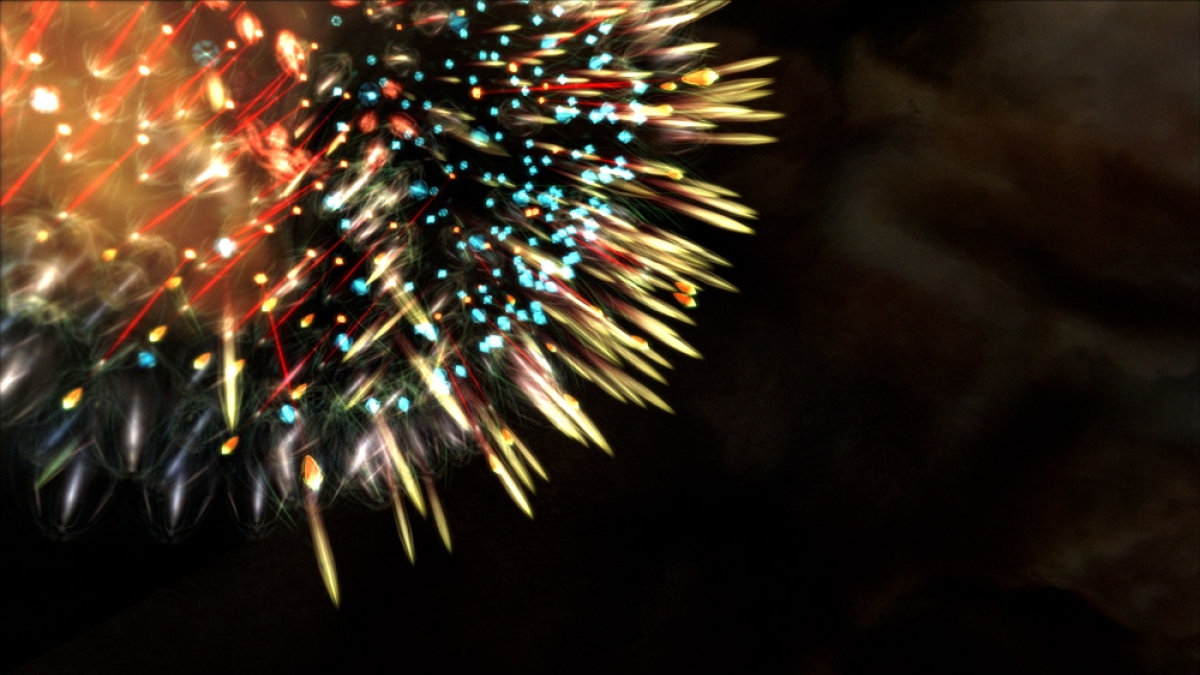ASU Art Museum announces 'Restless Balance,' a new exhibition by Boredomresearch

Image credit: Boredomresearch, "In Search of Chemozoa," 2020, three-channel HD moving image installation, 11 mins. 52 secs. Image courtesy of Boredomresearch.
From the textbooks of ancient Greek physician Hippocrates to current research on the coronavirus pandemic, we know that human health is impacted by environmental factors. British artists Vicky Isley and Paul Smith of Boredomresearch worked with leading science institutions to create dynamic video installations that explore how large scale environmental changes alter disease transmission.
“‘Restless Balance’ takes on new relevance as we navigate the complexities of a global pandemic and reexamine the delicate relationship between human health and our social and natural environments,” said Brittany Corrales, curator at the Arizona State University Art Museum. The exhibition includes the U.S. premiere of the video installation “In Search of Chemozoa,” along with three earlier works.
“In Search of Chemozoa” was created with researchers at the Arizona Cancer Evolution Center at the ASU Biodesign Institute, who are working on radically new ways of thinking about cancer treatment. Other works in the exhibition are based upon animated robots navigating Venice’s polluted canals, flight patterns of mosquitos carrying malaria and intertidal snails adjusting to changing coastal conditions.
The artists present a daring new vision for technological innovation, centered on uniting the domains of art, science and society. "In the greater scheme of things, the differences between science and art are fewer than one might think,” said Pamela Winfrey, scientific research curator at the Arizona Cancer Evolution Center. “Both take imagination, observation, curiosity and creativity and without those critical elements, neither can do their work."
“In seeking serenity we find ourselves in motion,” said Boredomresearch in a written statement. “Sacrificing the sanctuary of the familiar, to imagine a place where health is maintained both in our bodies as well as the spaces through which they wonder. Searching for stability we push against the tide maintaining a restless balance between uncertainty and hope.”
"In Search of Chemozoa" was commissioned and funded by the Arizona Cancer Evolution Center, a new center established through an award from the National Institute of Health/National Cancer Institute and housed at the Biodesign Institute at ASU. The exhibition is co-presented by the ASU Art Museum and co-curated by Pamela Winfrey, scientific research curator, Arizona Cancer Evolution Center; Heather Sealy Lineberry, curator emeritus; and Brittany Corrales, curator, ASU Art Museum. Additional funding for the ASU Art Museum's presentation is funded by the Andy Warhol Foundation for the Visual Arts with support by the ASU Art Museum's Evelyn Smith Exhibition Fund.
More Science and technology

Applying AI to microelectronics manufacturing
Rivers flow across the planet’s surface, carving deep valleys and intricate canyons. Likewise, makers of microelectronics direct…

Applied Materials invests in ASU to advance technology for a brighter future
For nearly 60 years, global giant Applied Materials has been hard at work engineering technology that continues to change how…

Meet ASU engineering students who are improving health care, computing and more
Furthering knowledge of water resource management, increasing the efficiency of manufacturing point-of-care health diagnostic…

